Table of Contents
Suppose you’re thinking about going abroad to study in Latin America. In that case, there’s plenty to anticipate high-quality schools, never-ending cultural opportunities as well as delicious and diverse food options, a vibrant nightlife scene in the most popular cities for students, and warm locals.
We’ve stepped back from the academic aspects of life to explore a different reason to consider studying within Latin America: its vast collection of natural, historic, human-made, traditional, modern-day beautiful locations to see. We’ve tried to pinpoint to 10 most stunning spots within Latin America – leave a comment below if you feel we’ve missed any treasures worth seeing.
Iguazu Falls (Brazil, Argentina, and Paraguay)
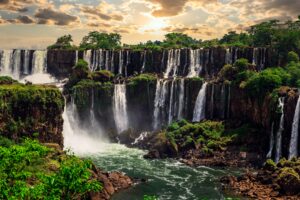
It stretches through an area that is a “tri-border” between Brazil, Argentina, and Paraguay. Iguazu Falls (or Iguacu Falls) comprises 275 waterfalls that are twice as large as Niagara Falls. The highest waterfall is 80 meters. The entire 2,700-meter-wide area is listed on the UNESCO World Heritage List.
Most waterfalls can be found in Argentina, including the principal popular attraction Garganta of the Diablo (Devil’s Throat). The Brazilian side offers a stunning panorama that your camera will be able to capture. In addition, if you are bored of the stunning views, there’s a variety of wildlife and the surrounding rainforests to explore as well as diving under the falls, taking a thrilling guided boat ride, taking a white-water rafting trip, or going abseiling.
The best advice: Arriving from the Brazilian side is more affordable. Also, to get a closer perspective of Garganta del Diablo, wander through the subtropical forest in National Iguacu Park and take the elevator up to the highest point of the waterfalls.
Patagonia (Argentina and Chile)
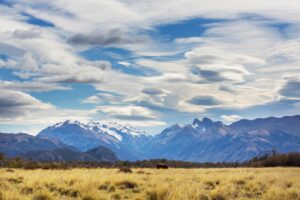
Argentina hosts beautiful and wild Patagonia, and the region shared with Chile is considered among the most stunning regions in Latin America. Argentine Patagonia combines steppe-like icy plains glaciers (the most spectacular of which is the glacier Perito Moreno) along with abundant vegetation, animal, and birdlife towards the Andes.
Tips for the web: Don’t miss the famous Cueva de las Manos (Cave of Hands) in Santa Cruz, Argentina. The name refers to murals believed to be from around 8000BC and includes the impressions on many hundreds’ hands.
Salar de Uyuni (Bolivia)
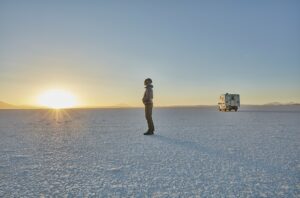
Salar de Uyuni in the southwest of Bolivia is the world’s most significant salt flat, covering 10582 square kilometers and 3,656 meters over sea level. The Salar is incredibly flat and features a lithium-rich salt crust estimated to contain eleven billion small tons of salt. When it rains, the water’s thin layer transforms the surface into a vast mirror, creating unique and highly creative photos at one of the most unusual spots in Latin America.
As more and more people choose the option of community tourism (staying with people from nearby towns), Hotel stays can offer a unique experience: Palacio de Sal (Palace of Salt) is one of the hotels that is made of salt, which includes the walls, floors and ceilings, furniture, and sculptures. However, before you have any thoughts, there’s an absolute rule prohibiting visitors from touching the walls.
Do not overlook: The antique train cemetery used to be a distribution hub for trains transporting mineral materials to Pacific Ocean ports.
Ouro Preto (Brazil)
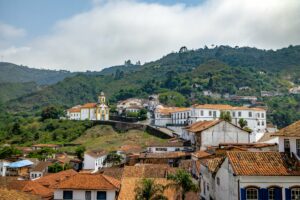
A former mining town of the colonial era, Ouro Preto is now a flourishing university town. Its well-preserved Baroque architecture, charming cobblestone streets, and various historic buildings have been classified as a UNESCO World Heritage Site. In February and March, Ouro Preto is usually tranquil despite chaotic Carnival crowds dressed in costumes and the sound of traditional bands. The city’s size is small, and its steep hills are ideal for walking around the city’s various attractions, bridges, and fountains from a distance.
Did you know? …? Ouro Preto’s highly regarded Baroque sculpture maker Antonio Francisco Lisboa (aka Aleijadinho) made many well-known architectures? Legend has it that when Aleijadinho’s disease grew worse (his nickname is “little cripple”), the artist continued to work even after losing his fingers and ability to use his legs.
Torres del Paine (Chile)

Southern Chile also boasts the stunning Torres del Paine National Park. This spectacular region is an area of transition between the Magellanic sub-polar forest and the Patagonian Steppes. It is a World Biosphere Reserve that came fifth on the list of the unique spots on earth as per National Geographic.
According to the report, Torres del Paine has everything: massive glaciers, including the largest Glacier Grey, snowy Cuernos del Paine (horn-like mountain tops), pristine lakes of ice-blue sparkling clear rivers and cascades, the vegetation of all shades of green, and the guanacos resembling llama. It is among Chile’s most popular and prominent parks and is a famous hiker destination.
Top suggestion: Whether hiking the W Circuit or the Big Circuit, using a tour guide will significantly improve your experience. They will take you to places worth a visit and provide opportunities to fly-fish or kayaking, as well as ice-hiking—all of the necessary equipment.
Cartagena (Colombia)
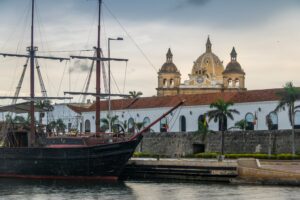
One of the beautiful cities located in Colombia, Cartagena ( Cartagena de Indias), is frequently described as the country’s most beautiful city.
The charming port city that lies situated on the northern shores of Colombia is the fifth largest city in the nation and is most well-known for its walled city of the colonial era and fortresses. Cartagena has the most extensive fortifications in South America. It was declared a UNESCO World Heritage Site in 1984.
Cartagena’s vibrant and welcoming people, open-air cafes beach, sandy beaches, and carriages drawn by horses combine with the fantastic Italian and colonial-style buildings to create a stunning background as you walk through its cobbled alleys.
Did you know that …? Cartagena is one of the cities with the most connection to the real-life pirates from the Caribbean?
Monteverde Cloud Forest Biological Reserve (Costa Rica)

Find your inner Aladdin and wander through the clouds at the Monteverde Cloud Forest Biological Reserve, known as the Monteverde Cloud Forest because of its continuous lower-level clouds. This reserve covers 10,500 hectares and includes six ecological zones, which are extremely rich in biodiversity, with over 500 species of birds, including the native Golden Toad and the most orchids found anywhere in the world.
About 70,000 people take advantage of those well-maintained trails, suspension bridges, and trails through the park each year. Zip lines and horseback riding tours are alternatives if you’re not on the hike.
Did you know? …? The Reserve has views of the Pacific Ocean and the Caribbean Sea due to its position at the Continental Divide?
Tikal (Guatemala)
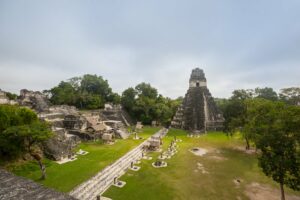
Guatemala is the home of Tikal, the UNESCO World Heritage Site Tikal, one of the most significant archeological sites from The Maya civilization. In the middle of a jungle area, this secluded city is among the most researched of all the major lowland Maya cities due to archeologists’ ongoing research into the city’s tombs, monuments, temples, palaces, and temples.
Tikal is somewhat restored by the University of Pennsylvania and the government of Guatemala. The limestone architecture of the city includes thousands of structures from the past like massive royal palaces, pyramids, platforms for ceremonies, and The Plaza of the Seven Temples.
The best tip is to Use the steep wooden stairs to reach the top of the temples for sweeping views of the trees. There is also the option of an adventure in the canopy of the jungle that takes you through cables and the tall trees just beyond the gate of Tikal National Park.
Machu Picchu (Peru)
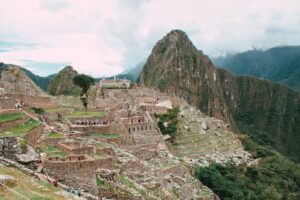
Peru is perhaps best famous because of Machu Picchu, a UNESCO World Heritage Site and one of the World’s New Seven Wonders.
The site is located at 2,430 meters over sea level. This unspoiled cultural site features three main structures: The Inti Watana and The of the Sun, Temple of the Sun, and the Room of the Three Windows, all located within the sacred district of Machu Picchu. The Inca Track is perhaps the most popular method to see Machu Picchu and the southern Wayna Picchu, although some tour operators offer biking, zip-lining, and rafting.
Did you know? …? that even though Machu Picchu is one of the most well-known symbols of Inca culture, Machu Picchu still retains its mysterious aura? Archeologists agree that Machu Picchu’s functions were primarily residential and religious, yet there’s intense controversy over the premises.
Angel Falls (Venezuela)
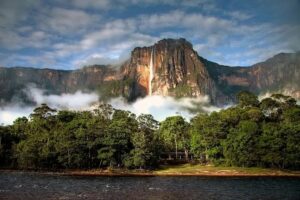
In terms of high, Venezuela is also home to the highest waterfall anywhere in the world. Angel Falls is located in Canaima National Park.
Salto Angel in Spanish and Kerepakupai Vena in the language spoken by the Native American Pemon, many of whom consider Canaima their home. Angel Falls stands at a neck-straining height of 979 meters. The stunning waterfall cascades over the cliff of Auyantepui Mountain in Canaima National Park, a UNESCO World Heritage Site and the main entrance for visitors to Angel Falls.
Did you know? …? Angel Falls was the inspiration for the setting of The Disney animated movie The Up? Also, it appeared in Disney movie Dinosaur and the American Horror-comedy movie Arachnophobia. In his novel The Lost World, the author Arthur Conan Doyle was inspired by the Table Mountains (tepui) of southeast Venezuela.








